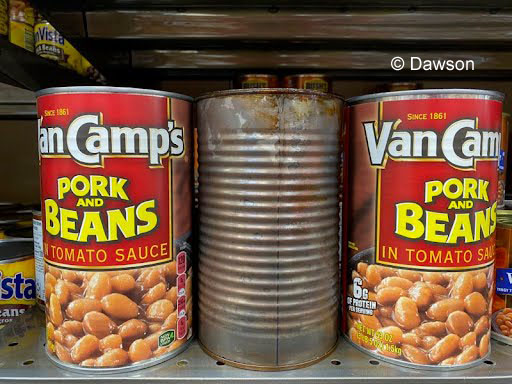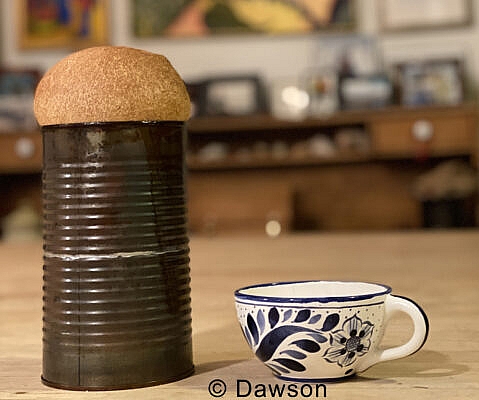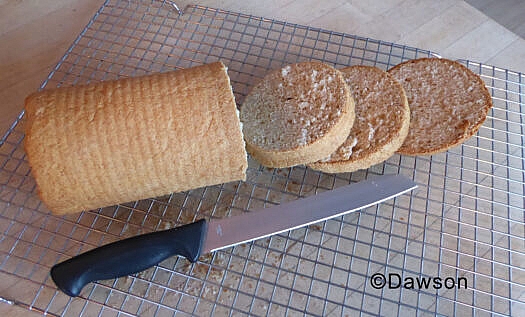Lou’s News #8 — Can Bread, Adventure In Baking
This newsletter round, we’ve got some cookin’ going on. Specifically, bread.
While scribbling my memoirs, I’m flooded with memories of my mother’s cooking. How she expressed herself through it; how her creations were signs of the times.
Late 1960s. If you fancied the countercultural, perhaps you cooked bread in a tin can instead of a baking pan. It was hippie days for my mother, Patricia, so that’s exactly what she did.
The result was a moist, pleasant-smelling loaf that we cut into perfect rounds for sandwiches. The rib marks from the can created circumferential cutting guides.
My wife Lisa and I replicated the entire shebang.
First step: Acquire the can and prep it. In the 60s, the “tin” cans we used for bread were made from steel and lined with—you guessed it—tin. They were easy to prep for cooking: you just threw them into a campfire or wood stove and burned the label off. It didn’t matter if the tin melted off. To match my mother’s technique, we used a 53oz Van Camp’s bean can, pictured above. They’re made from steel, big enough to reach inside, but not too large: 4 by 7 inches, classified as a #3 tall.
While writing this, I got curious about the amounts of tin I likely consumed back in the day. We used tin can “billycan” cookpots when I instructed for NOLS, and then there were my mother’s bread cans. My research indicated that tin is entirely non-toxic in small quantities. I believe that, though on second thought, can I blame some of my personality flaws on the tin cans of my youth?
Modern Van Camp’s cans are made of steel and lined with plastic rather than tin. Here’s the procedure I used to convert to a baking implement, including removal of the plastic liner:
1. Open with an opener that breaks the seam, rather than leaving a jagged edge.
2. Be rid of the beans (no comment), and strip the label.
3. Heat the can to cherry red with a MAP-gas torch (outdoors). Plastic lining will cook off fast.
5. Scour the inside with a wire wheel on a hand drill.
6. Clean with soap, water, and steel wool.
7. Bake at 500 degrees F for a few hours to be sure everything is burned out.
8. Cool. Clean again with steel wool.
9. Season with cooking oil as you would a cast iron griddle or frying pan.
As for the bread, we used Patricia’s standard yeast-risen recipe, with a few eggs for stability and a little extra cooking oil to be sure it didn’t adhere to the “can-pan.” We liberally buttered the pan, and cooked one throw-away loaf before we began enthusiastic consumption.
If you try this, let us know how it goes!
Note: I’m 99% certain my mother picked up the bread-pan can idea from Isabel Mace, wife of Stuart Mace. In the 1950s, Isabel and Stuart founded an end-of-the road commercial operation in a high mountain valley ten miles out of Aspen, Colorado. Over the years, they ran their “Toklat” as everything from a dog sledding concern to a small restaurant. The Toklat became storied for a variety of reasons, went somewhat dormant for a few years, and was revitalized in 2024 as part of the Aspen Center For Environmental Studies non-profit. More here.




